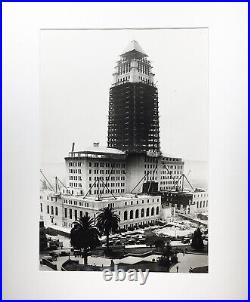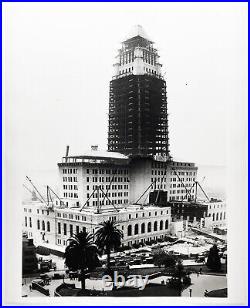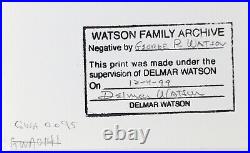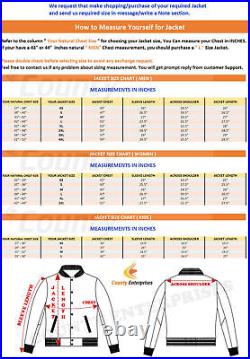







EARLY LOS ANGELES: 192s-30s: TWO PRINTS: (1) 16×20 & (1) 20×24-inch Silver Prints from the Watson Family Archive, Hollywood. These were printed in 1999 from the original GLASS PLATE negatives by master printer Michel Karman in Los Angeles under the supervision of Delmar Watson. These were printed in conjunction with a “solo” exhibition of the Watson Family Archive at G. Ray Hawkins Gallery, Santa Monica, CA. A subsequent exhibition entitled. 100 Years of Hollywood: The Watson Family Archive. The Getty Gallery, The Los Angeles County Public Library (630 West Fifth Street) in Downtown LA in 2003. The Watson Family Archive no longer makes prints of this quality from the original negatives. THESE ARE PERFECT FOR ANY HISTORICAL DISPLAY in a HOME/OFFICE. City Hall is a 20×16-inch print, is unsigned and is MATTED; The BILTMORE print is a 20×24-inch print and is SIGNED. BOTH images are published in. Quick, Watson: The Camera: Seventy-Five Years of News Photography: Los Angeles (1975). The First Los Angeles Skyscraper, 13-Story City Hall, 1937. Gelatin silver print, printed in 1999 from the original glass negative. Image size: 19 ½ x 13 ¾ inches. Paper size: 20 x 16 inches. Mat size: 24 x 20 inches. Illustrated: Quick, Watson, The Camera: Seventy-five years of News Photography: Los Angeles by Delmar Watson, 1975, p. Condition: Excellent; some slight undulation on the edges from the original drying process. The Biltmore Under Construction, Fifth and Olive Streets, across from Pershing Square, Downtown Los Angeles, 1923. Estate stamp also on verso. Image size: 18 1/8 x 23 1/8 inches. Paper size: 20 x 24 inches. Condition: Excellent; minor crease in lower left margin, NOT affecting the image; some slight undulation on the edges from the original drying process. The nine Watson family children, “The First Family of Hollywood, ” appeared collectively in nearly 1,000 silent and classic-era films, and are honored with a star on Hollywood Boulevard. Their father Coy Watson Sr. Was a Hollywood cowboy and special effects man who among other projects rigged the flying carpet for Douglas Fairbanks in. The Thief of Bagdad. As the family grew, many followed in the footsteps of their uncle, the photographer, George R. In less than a century, Los Angeles grew from a coastal enclave to one of the world’s most influential cities. The Watson Family of photographers recorded it all – big disasters, small everyday triumphs, world leaders, petty con men, sports legends and infamous trials. Across four generations, a Watson photographer (or two) has been present at most of the significant events in Southern California, and on occasion through-out the world. Spanning the entire 20th Century, the exhibition presents more than a historical chronology. It also illustrates how advances in photo-technology changed the texture of news photography. The Watson family’s tradition of technical innovations (dating to the early 1910’s in both the motion picture and still photography) are highlighted throughout the exhibition. The Watson’s vintage cameras and historical memorabilia (such as press passes, event programs, etc,) are also available for exhibition by special arrangement. His first newspaper photos were published in Oregon by the Grants Pass Courier in the early teens where he scratched out a meager living as a photographer. George was hired as one of the first staff photographer of the Los Angeles Times in 1917 and covered the big news stories of the roaring 1020’s; such as, the Parker – Hickman kidnapping(1927), the first around the world flight(1924) and is credited with the first published news photos taken from the air of Los Angeles in 1919. He left the Times in 1929 to manage Pacific+Atlantic News photos, which became ACME News Pictures, (and later UPI) where he and his staff covered the 1932 Olympics, transmitted L. S first wire photo, and documented the major achievements of the golden years of aviation. George stayed at ACME until 1940 when he retired. As an inventive young man George created many products and techniques to improve the photographic equipment and processes of his time. Delmar Watson- (1926 – 2008). Delmar started acting in movies at age 6 months in early westerns with Tom Mix and George O’Brien, and in the Hal Roach “OUR GANG COMEDIES”. He played Tad Stanley with Randolph Scott and Shirley Temple in her first feature film, “TO THE LAST MAN”(1933) and again with Temple as Peter the Goat General in “HEIDI”(1937). Delmar shot a glass ball out of the hand of WC Fields’ with a slingshot in the classic comedy “YOU CANT CHEAT AN HONEST MAN”(1939) Delmar learned photography from his father, brothers and worked at ACME news Pictures before the war. He entered the Coast Guard on his 18. Birthday and 6 months later joined his brother Coy’s photography unit at Long Beach Naval Station until his discharge. He worked in his brothers’commercial studio and then was hired as a staff photographer by the Mirror-News, in 1948. He left the Mirror ten years later to join the “6 Watson Borthers ” phtography studio until he opened his own studio in 1967. Delmar has stored the Watson’s historic collection of photographs, negatives and memorabilia at his Hollywood office until moving the archive to Glendale in 2007. Publications & Museum Collections. The Watson’s Photographs have been published world-wide for close to a century in newspapers, magazines and books. Watson photographs are held in the permanent collections of The Getty Museum and The Hollywood Heritage Museum, and one of George Watson’s original 4×5 cameras is in the permanent collection of the Newseum in Washington D. Selections from the Family Archive have also been exhibited at Los Angeles County Museum of Science and Industry (1972), Los Angeles County Public Library, Getty Gallery (2003), and The Forrest Lawn Los Angeles Museum (2007). In 1999, the Watson Family received a star on Hollywood’s Walk of Fame honoring their contributions to the film industry.
















